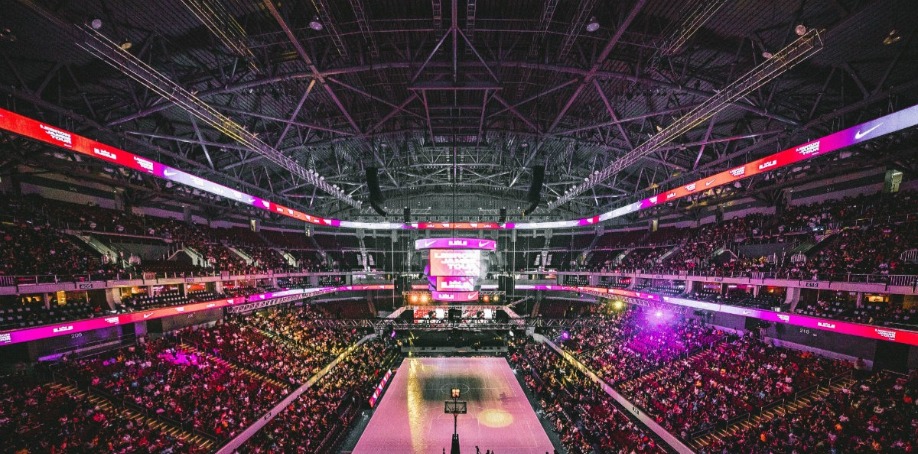
Sports are an enduring pastime for many. And part of the reason sports have remained so popular is because stadiums have learned to adapt and change to fit the times.
However, today's stadiums have their work cut out for them. As the Commercial Integrator staff notes, “To stay competitive with the big flat-screen TV's in the home or sports bar, thriving stadiums are adding a complete digital experience to bring out the fans and keep them engaged.”
This is why, a decade ago, the Dallas Cowboys built a new stadium and invested heavily in the AV experience. Since then, numerous other sporting venues have been built, and many of them have leaned heavily on pro AV to contribute to the fan experience.
AV equipment can take a stadium from good to great, and from great to amazing. AV displays engage audiences, get them involved and make stadiums sought-after locations all year round.
However, not all AV equipment is up to the task. Both audio and visual need to be flexible and comprehensive to meet the needs of a sports stadium. People expect high quality. If stadiums expect people to go out of their way to sit in the stands, they need to deliver.
The Power of Quality AV
Of course, having quality AV equipment is a must in almost every industry, not just in sports. But many people don't understand just how much pros invest in their AV equipment.
“As a $3 billion a year industry, the U.S. professional audio visual market is holding strong. Year after year, growth is spurred by new innovations and exciting trends,” reports Ingram Micro Advisor.
And AV isn't just a one-time investment. If sports stadiums want to keep up with industry trends, they need to make sure to get equipment that can be updated regularly, and they need it to be monitored to ensure peak performance at every game.
Jean-Marie Cloquet and Gregory Baudet of Silex Inside offer some insight on selecting quality equipment: “It is often said that compression adds a huge latency to a system. This is simply not true if the right codec is selected. When choosing a compression algorithm, there are a lot of aspects to take into account like the compression ratio to achieve, the quality expectation, the complexity in hardware or software, the interoperability with other equipment and of course the latency.”
But it isn't enough to just select quality AV. Stadiums have specific needs, and in order for AV equipment to work properly and engage audiences, the equipment needs to be flexible and reliable while still being cost-effective — all the while producing clear audio and visuals.

AV in Stadiums
The first step in selecting the right AV equipment is to think from the fans' perspective, as Susan Ashworth at TV Technology makes a point to mention: “When it comes to integrating new audio and video technologies into a stadium, the fan experience comes into play more and more. And that demand for more camera angles and slo-mo replays that fans are used to seeing on their home TV screens is impacting the design of even bigger screens at the stadiums.”
AV equipment should be for the fans first and foremost. It is important to take into consideration their wants and needs. And while giving them what they'd get on their home television screens is a good start, stadiums should strive to go even further.
People will want to have a unique experience at stadiums. AV equipment can help provide that.
Saben Shawhan at HARMAN gives just one example of what in-stadium AV equipment must do for the fan. For one thing, fans in seats don't have the benefit of play-by-play announcing that fans at home have. “So, it's vital for the ballpark to ensure the sound system is capable of delivering maximum impact into the seats, and that it's a stronger, heavier impact than yo're going to get sitting on your couch,” Shawhan says.
“And that's in addition to the fans next to you screaming, the mascot running up and down and the players throwing their arms up in the air to get the fans pumped up. Those are all things that work together to pull the fan in that you miss when you're not there in person.”
This focus on audio is something that Brad Fisher, a senior account executive at systems integrator Diversified, echoes. “The quality of the synchronized audio is critical. The sound has to have a presence. It has to sound good. It can't be an afterthought.”
But of course, audio is not the only consideration when it comes to quality AV. Visuals will play a key role in keeping audiences engaged and interested.
When it comes to visuals, don't be afraid to get creative. “Displays within the stadium are becoming more integrated with other media such as TV,” says Geraint Williams, CEO at ADI TV. “For example, we have seen live odds broadcast on LED perimeter displays for the benefit of the television audience. There is currently a great deal of interest in associating social media with displays in an attempt to create conversations within and beyond the venue.”
Of course, any stadium will have a budget. Kevin Goldsmith, chief technology officer at Ping HD, says “cost is a huge factor in the sports market, as is the case in all markets, really” in providing solutions both he and the customers want.
Companies like Electrosonic know there are unique challenges to setting up AV equipment in a sports stadium. Integrated audio and visual control systems are key, as are venue regulations.
Although finding quality AV for sports stadiums isn't easy, it is well worth the investment of both time and money. As long as the AV equipment is maintained, updated regularly and flexible, it can open up the stadium for use in all sorts of unique ways.
Powerful AV can make stadiums popular event locations even outside of games — Charlotte Flach notes that this very thing happened to the Ricoh Arena in the UK. The 32,000-seat venue, which hosts soccer and rugby matches, also has a lounge, club and meeting facility on its premises.
And this is just one stadium of many that are implementing quality AV displays to create a variety of experiences.

How Other Stadiums Are Getting the Most Out of Their AV
Lambeau Field in Green Bay is a great example of a stadium that has invested in quality AV. Mike Hedden, founder and CEO of Georgia-based Danley Sound Labs, has supplied the Packers' stadium with audio equipment for years. Hedden echoes the sentiment that many have already shared on the importance of quality audio:
“As sound comes out of the loudspeaker, it doesn't make a perfect 180-degree cone – you wouldn't want it to – and, in the case of Lambeau, it's like a 60-degree cone. The down-fills cover the gaps that are up really close between cones. If your seat is one being covered by down-fills, your back is almost against the vertical wall of the luxury boxes.”
Just as with Lambeau Field, the shape of any stadium will affect how audio travels. Quality AV equipment needs to be flexible in order to allow everyone in the stands to hear it. It also needs to be able to withstand various weather conditions.
Videonations discusses the quality AV at Wembley Stadium in London, focusing on the visual element rather than the audio. “The main attraction, apart from the football, are the two large LED video displays on both ends of the stadium, measuring 8.15m x 23.88m, with a unique concave design. With a resolution of 528 pixels x 1560 pixels in a 15HD pixel layout, few football grounds around the world can offer a better viewing experience.
“To further improve on the experience for matches played at night, a 44 arc 8-core LED lighting system, featuring the COB LED floodlight was introduced this year at the stadium. This new technology offers efficient and versatile solid-state lighting, guaranteed to allow Wembley Stadium enjoy the ambience.”
Creating an ambiance and using AV equipment to create a unique visual experience will get people into their cars as opposed to planted on their couches.
Finally, when it comes to truly powerful AV, regular updates and improvements are key. Boston Light & Sound, for example, has provided AV to Fenway Park for more than 30 years. This arrangement works because they regularly update the system.
By following these examples, sports stadiums can create a quality and engaging AV strategy.
Images by: Arnold Exconde, TJ Kolesnik, JC Gellidon


